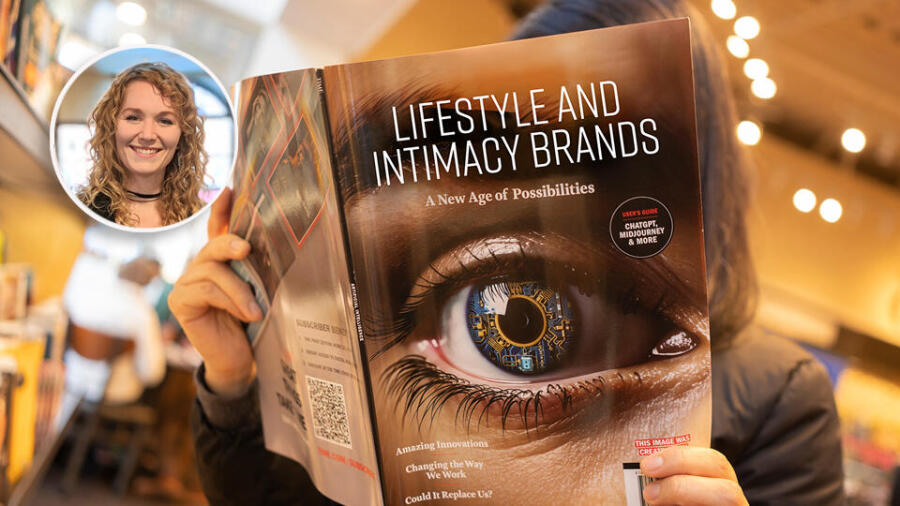Every brand dreams about landing a feature in The New York Times or Men’s Health — and pleasure brands are no exception. After all, mainstream media coverage isn’t just a vanity milestone. It builds trust, attracts new audiences and opens doors to connecting with retailers, partnerships, and investors.
Of course, the media won’t just show up. You have to give them a reason, which means getting creative. Having worked with sex toy brands, lube companies and sexual wellness retailers for years, helping them secure placements not just in trade or industry media but also in mainstream, tech and lifestyle publications, I can share the following guidelines for getting your message out into the wider world.
Talk about design, function, comfort or empowerment — not just sex.
Start With the Easiest ‘Yes’: Midsize Podcasts
Podcasts represent one of the lowest-barrier, highest-impact channels for gaining media traction — particularly midsize shows with 10,000 to 50,000 listeners. The hosts of these podcasts often explore topics such as sexuality, tech, wellness or identity in ways that more traditional outlets do not, and their audiences are deeply engaged.
I’ve had clients appear on midsize podcasts and walk away with more traffic and long-tail engagement than they got from their biggest press hits. Why? Because podcasts are built on trust. Listeners come back each week for real conversations. If you’re a guest, you’re part of that.
With that in mind, here are a couple of tips to remember when going after placement on a podcast:
- Pitch your story, not your product. Are you a performer-turned-entrepreneur? A founder creating adaptive toys for disabled users? Is your brand solving problems for queer people or older adults? Is your technology challenging outdated norms? That’s your hook.
- Lead with value. Podcasts thrive on education. Don’t just promote — teach. Share insights on topics like body literacy or sex tech trends.
Explore Nontraditional Channels That Match Your Angle
Mainstream media doesn’t just mean Wired or Vogue; it also encompasses numerous other outlets, such as newsletters, wellness blogs, Reddit threads, indie zines and niche digital publications. Even if these verticals do not typically cover the pleasure industry, they’ll still create space for your story — if what you are offering resonates with their readers.
I’ve helped brands pitch lubes to menopause newsletters, discreet vibrators to travel sites, and BDSM accessories to fashion blogs that focus on leather aesthetics. It’s not about changing the product — it’s about reframing the story.
- Map your product to other lifestyle categories. Those might include travel, luxury, skin care, mental health, accessibility, tech.
- Lead with the shared value. Talk about design, function, comfort or empowerment — not just sex.
Collaborations Make You More Newsworthy
Has your brand teamed up with an influencer, performer or creator? Launched an exclusive collaboration tied to a digital platform that has a vast audience and built-in cultural relevance? Intersections between technology, talent and product create compelling narratives that are easy for editors to latch onto.
A few examples:
- A toy brand syncing devices with interactive cam or VR platforms.
- Performers co-launching product lines, or offering physical goods to match digital fantasies.
Don’t Sleep on Sponsoring YouTube Creators
YouTube may seem like an unlikely option for pleasure brands, due to the platform’s content restrictions, but it can be surprisingly effective. Many creators in wellness, chronic illness, LGBTQ+ or relationship niches often feature sex-positive sponsors.
Most importantly, these creators often have millions of subscribers and are adept at integrating adult-friendly products in PG-rated, education-first ways. It’s one of the few spaces where product and story can coexist organically.
To make this kind of sponsorship happen, be sure to do the following:
- Identify the right creators. Look for creators whose values align with yours, even if they don’t focus exclusively on sex.
- Focus on your benefit. Whether it’s a discreet vibe for use as a stress tool, or a lube that supports postpartum intimacy, be crystal clear about what makes your product unique.
- Make it easy to integrate. Employ sleek visuals, simple messaging and a clear call to action.
Showing Up in the Real World Still Matters
While digital buzz builds reach, in-person presence builds credibility. Sponsoring Pride festivals, kink events or sex-ed workshops are great ways to support your local community — but they are also excellent media activation strategies.
- Host in-store classes. Topics might include anything from “Pleasure After Menopause” to “Intro to Pegging” — especially if they match specific awareness months.
- Partner up. Engage with creators and organizations to produce co-branded events.
- Document everything — photos, stories, tags. Many outlets want to cover brands that already look newsworthy.
Remember: Visibility requires intention. Bringing pleasure brands into the mainstream isn’t about watering them down. It’s about translating your values into stories that land. With the right strategy, your brand can help shift the topic of sex and intimacy into the public conversation, where it belongs.
Hail Groo is the director of PR and marketing for Forward Approach Marketing, where they combine their background as a public historian with over a decade of expertise in diverse marketing fields. Beyond their work in PR and marketing, Hail is a published travel writer, magazine contributor, podcast guest, award-winning photographer and Colorado-based journalist.








